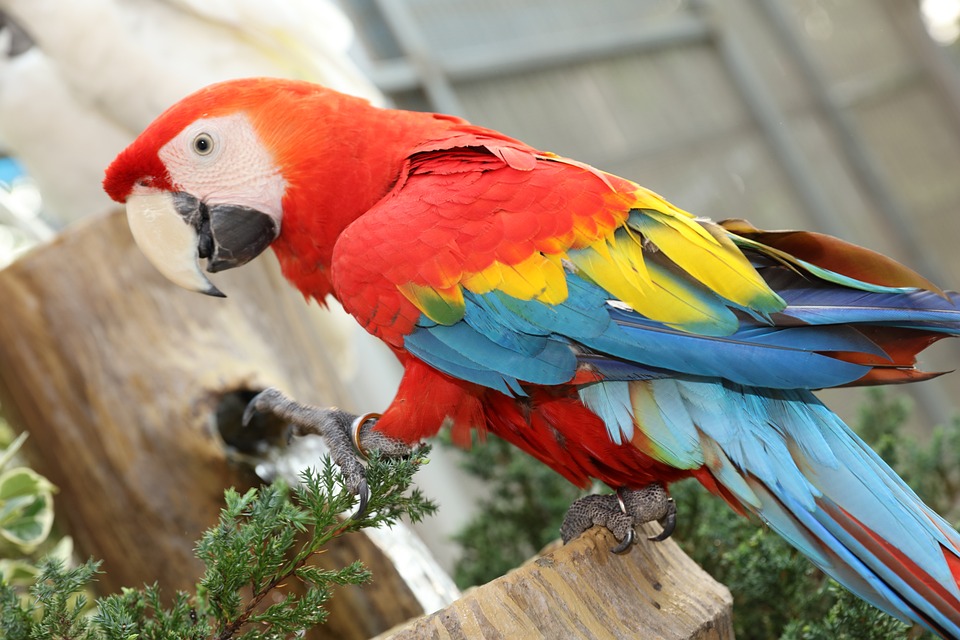Parrot training is an important aspect of keeping your feathered friend happy and healthy. One effective way to achieve this is by incorporating foraging puzzles into their training routine. Foraging puzzles challenge parrots to use their problem-solving skills to retrieve treats or toys, providing mental stimulation and enrichment. In this article, we will explore techniques to encourage parrots to interact with foraging puzzles during training.
Before we dive into the training techniques, let’s understand the significance of foraging puzzles in a parrot’s life. In the wild, parrots spend a significant amount of time foraging for food. By providing foraging puzzles, we mimic this natural behavior, preventing boredom and promoting mental and physical exercise. Foraging puzzles also help reduce behavioral issues such as feather plucking or excessive vocalization, as they redirect the parrot’s focus to a stimulating activity.
Choosing the right foraging puzzle is crucial. Not all puzzles are created equal, and it’s important to select ones that suit your parrot’s size, skill level, and preferences. Some popular types of foraging puzzles include food-dispensing toys, shreddable toys, and puzzle boards. Start with simpler designs and gradually increase the complexity as your parrot becomes more proficient.
Now, let’s explore some effective techniques to encourage your parrot to interact with foraging puzzles during training sessions:
1. Introduce the puzzle gradually: Start by introducing the puzzle in a familiar environment, such as your parrot’s cage or play area. Allow your parrot to explore the puzzle at their own pace without any pressure. Place enticing treats or toys inside to pique their interest.
2. Use positive reinforcement: Whenever your parrot shows interest in the puzzle or makes an effort to manipulate it, provide immediate positive reinforcement. Praise them with verbal cues, offer treats, or provide a favorite toy as a reward. This creates a positive association with the puzzle.
3. Model the behavior: Parrots are highly observant creatures. Show them how to interact with the puzzle by manipulating it yourself. Your parrot might imitate your behavior and start exploring the puzzle independently.
4. Increase the challenge gradually: Once your parrot becomes comfortable with a particular puzzle, gradually increase the difficulty level. Add more compartments, increase the number of steps required to access the treats, or introduce new types of puzzles. This ensures continued mental stimulation and prevents boredom.
Now, let’s address some frequently asked questions about foraging puzzles and parrot training:
1. How often should I incorporate foraging puzzles into my parrot’s training routine?
Foraging puzzles should be included in your parrot’s daily routine to provide mental stimulation. Start with shorter sessions and gradually increase the duration as your parrot becomes more adept at solving the puzzles.
2. What if my parrot shows no interest in the foraging puzzle?
It’s important to remember that every parrot is unique, and it may take time for them to warm up to the idea of foraging puzzles. Start with simpler puzzles and offer high-value treats to increase their motivation. Patience and persistence are key!
3. Can foraging puzzles replace regular feeding bowls?
Foraging puzzles are excellent supplements to a parrot’s regular feeding routine, but they should not entirely replace feeding bowls. Parrots still need access to a balanced diet, and foraging puzzles should be seen as a form of mental enrichment rather than the primary source of food.
By incorporating foraging puzzles into your parrot’s training sessions, you are providing them with a stimulating and engaging activity that promotes their natural instincts. Remember to choose puzzles suited to your parrot’s preferences and skill level, and always reward their efforts with positive reinforcement. With time and practice, your parrot will become a master at solving foraging puzzles, leading to a happier and more fulfilled avian companion.









